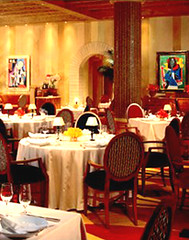Originally, I was going to pass on The New York Times outing Daniel Lyons, a senior editor at Forbes magazine, as the infamous fake Steve Jobs blogger. It was already covered ad nauseum and, with John Mackey still in focus, I wondered how many anonymous blogger stories might be too many.
But then, The Buzz Bin highlighted Todd Vanhooser’s comments that cut right to the chase. They clip some of the very best quotes from Lyons during an interview with Sam Whitmore, circa 2005. Back then, Lyons had all but admitted to a bit of a jealousy over bloggers.
"[Bloggers] have a lot of power, and a lot of companies ... live in fear of these guys." Why? Because there are no rules of engagement like there are in the MSM, Vanhooser summed the Lyons interview.
Rules of engagement for mainstream media? If Lyons felt stifled as a reporter, he might have tried a different publication or professional designation (op-ed writers and columnists have more fun). But then again, his plight hints at where mainstream media sometimes goes off the beaten path and leaves the public looking for online content.
You know, originally, there were only supposed to be two rules of engagement for journalists: tell the truth and shame the devil.
Everything else is a much more recent invention, including the need for two sources on every occasion (even when hard evidence is in hand). In fact, most of the new rules — full disclosure, source verification, not really “off the record” solicitations, etc. — were largely overreactions to the few who damaged the reputation of the many, and the overzealous ridiculing of public figures who demanded that journalists abide by the same rules they prescribe.
Fortunately for Lyons, the media is in an anonymous poster joking mood. Hee hee. Ha ha. Mackey, Lyons, Jessica Carter (the anonymous Capitol Hill sex blogger). Aren’t they all cards?
Look, I don’t think Lyons had an agenda against Jobs (like some anonymous bloggers seem to have against their targets). It doesn’t appear he had any malicious intent. And it probably didn’t hurt Jobs or Apple at all. It’s not even really fair to draw a comparison between him and Mackey or Carter.
However, he raises an interesting question. When you can no longer trust the people who were once charged with protecting public interest by telling the truth (as opposed to two sides of the story), who can the public trust?
But then, The Buzz Bin highlighted Todd Vanhooser’s comments that cut right to the chase. They clip some of the very best quotes from Lyons during an interview with Sam Whitmore, circa 2005. Back then, Lyons had all but admitted to a bit of a jealousy over bloggers.
"[Bloggers] have a lot of power, and a lot of companies ... live in fear of these guys." Why? Because there are no rules of engagement like there are in the MSM, Vanhooser summed the Lyons interview.
Rules of engagement for mainstream media? If Lyons felt stifled as a reporter, he might have tried a different publication or professional designation (op-ed writers and columnists have more fun). But then again, his plight hints at where mainstream media sometimes goes off the beaten path and leaves the public looking for online content.
You know, originally, there were only supposed to be two rules of engagement for journalists: tell the truth and shame the devil.
Everything else is a much more recent invention, including the need for two sources on every occasion (even when hard evidence is in hand). In fact, most of the new rules — full disclosure, source verification, not really “off the record” solicitations, etc. — were largely overreactions to the few who damaged the reputation of the many, and the overzealous ridiculing of public figures who demanded that journalists abide by the same rules they prescribe.
Fortunately for Lyons, the media is in an anonymous poster joking mood. Hee hee. Ha ha. Mackey, Lyons, Jessica Carter (the anonymous Capitol Hill sex blogger). Aren’t they all cards?
Look, I don’t think Lyons had an agenda against Jobs (like some anonymous bloggers seem to have against their targets). It doesn’t appear he had any malicious intent. And it probably didn’t hurt Jobs or Apple at all. It’s not even really fair to draw a comparison between him and Mackey or Carter.
However, he raises an interesting question. When you can no longer trust the people who were once charged with protecting public interest by telling the truth (as opposed to two sides of the story), who can the public trust?





















